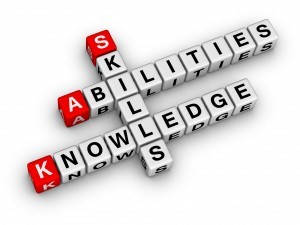Keys to a Successful Professional Services Skill Database

Quite often Professional Services organizations face the need to locate resources based on skill set, experience, or unique capabilities to meet delivery requirements for an engagement. This ends up driving the need to define a skill database as part of the organization’s resource management processes. There are a number of benefits in setting up and tracking resource skills in a database including:
- Identify resources in other departments or geographies that possess the necessary skill sets to deliver a services engagement
- Increasing utilization company-wide by sharing resources
- Reduce external vendor costs by leveraging internal resources
- Determine a professional development plan for resources based on key skill needs
- Identify key skill demands for talent acquisition
You can also use the skill database as a way to ‘advertise skills needs’ in a sense. For example, if your skill database is primarily focused on technology skills related to building websites, and options are added for individuals to complete that highlight skill needs with social media feeds or analytics, that sends a message to the employees that this is a new skill the company is interested in.
A skill database can highlight simple, but important things to know about resources, such as travel preferences (yes, no, in-country only, etc.) or language fluency (none, read-write, speak fluently). Industry knowledge is also a good profile element, as this helps align subject matter experts to customer industries for a smoother customer partnership when delivering projects.
Once you’ve created a skill database and determined the pertinent skills to include, you now need to create a rating for each skill. Typical skill levels are beginner, novice, standard/capable, or expert. These levels are often subjective and may be interpreted in various ways even with definitions. A suggestion is to focus on more objective measures such as 1-2 years of experience or 6-7 projects completed. The more objective the measures, the easier it will be for resources to complete their skill profiles and for management searching for matches to rely on the database contents.
Remember that if you rely on profiles for information, you will have to keep them up-to-date. Annual reviews are a good time to remind people to update their profiles. Make sure that you have some kind of protocol in place for regular updates to the skill database as resources attain new skills or increase their experience/expertise levels. There is no use putting all the effort into setting up a complete database then 45 days later it will be out of date and useless. By setting up a regular audit or cadence with your team, you can ensure you have a reliable skill database.
The main thing a skill database should capture is the necessary skills to support project delivery in your organization. It’s a fine line to adding too much or tracking information that’s too limited. So review what skills are often in demand and use that as a basis to define the start of a successful skill profile. For more information on the necessity of a skill database, view the webinar “Capacity vs. Demand in Your Professional Services Organization.”
